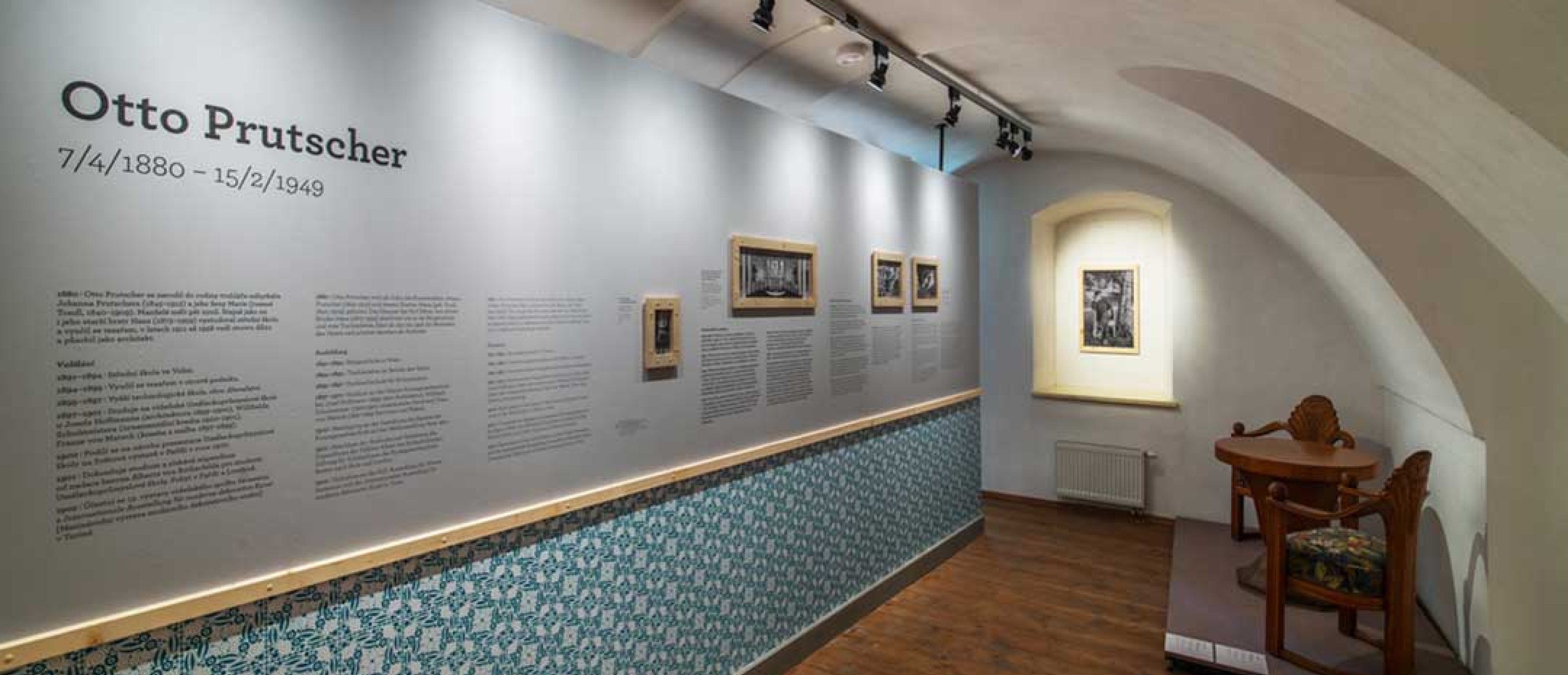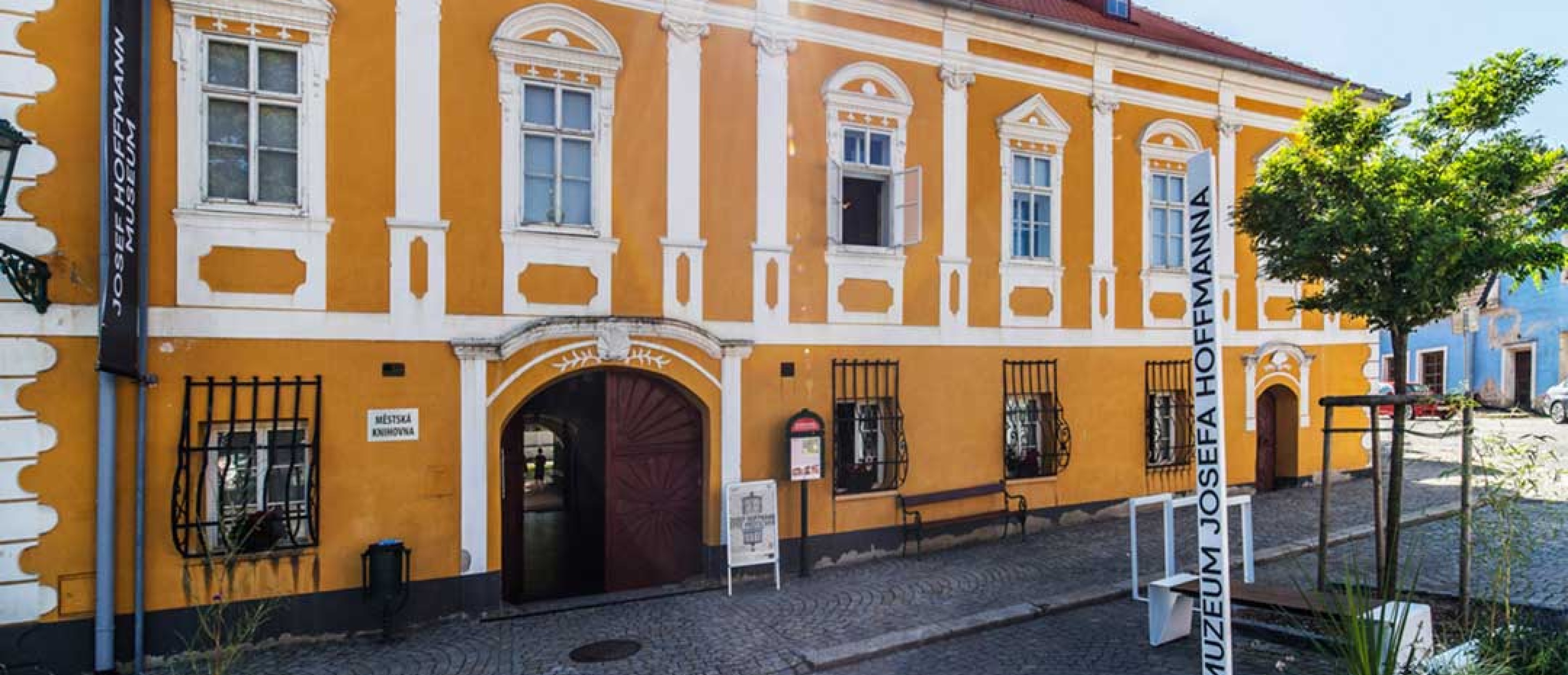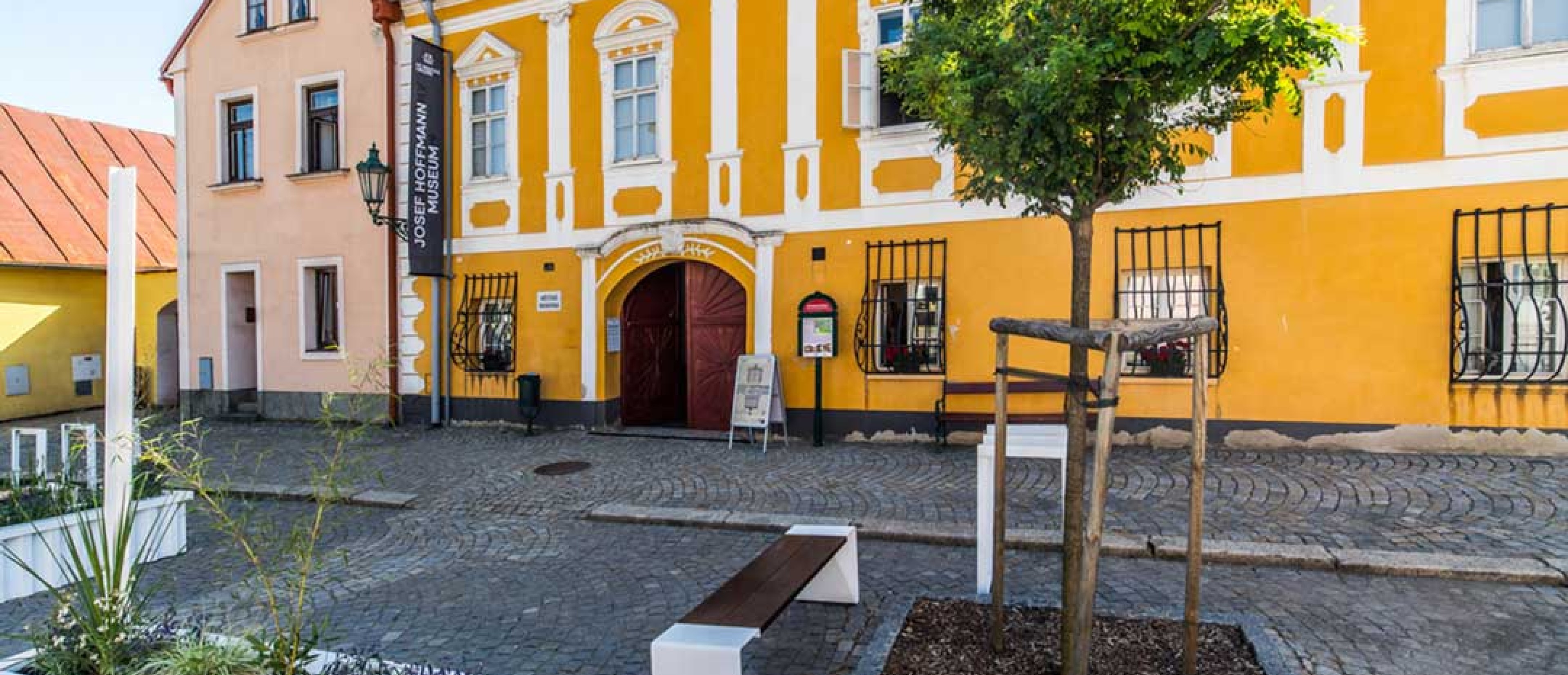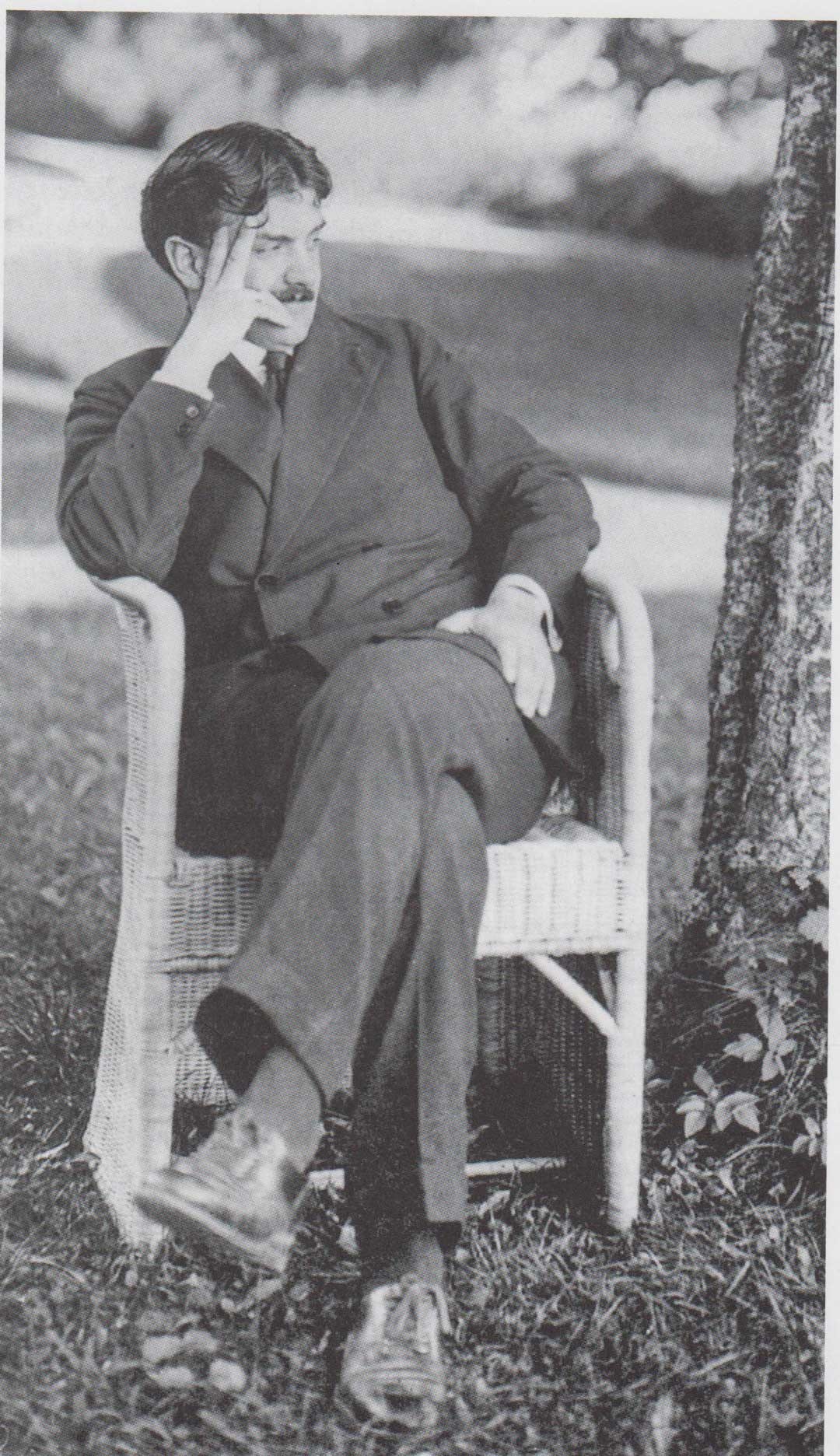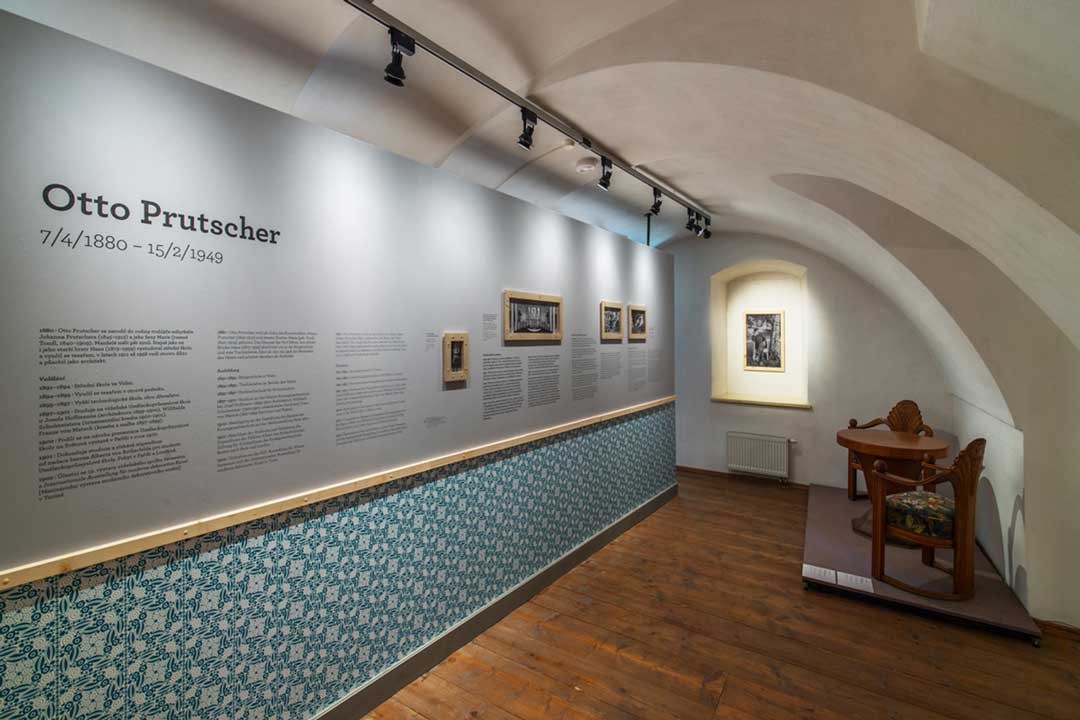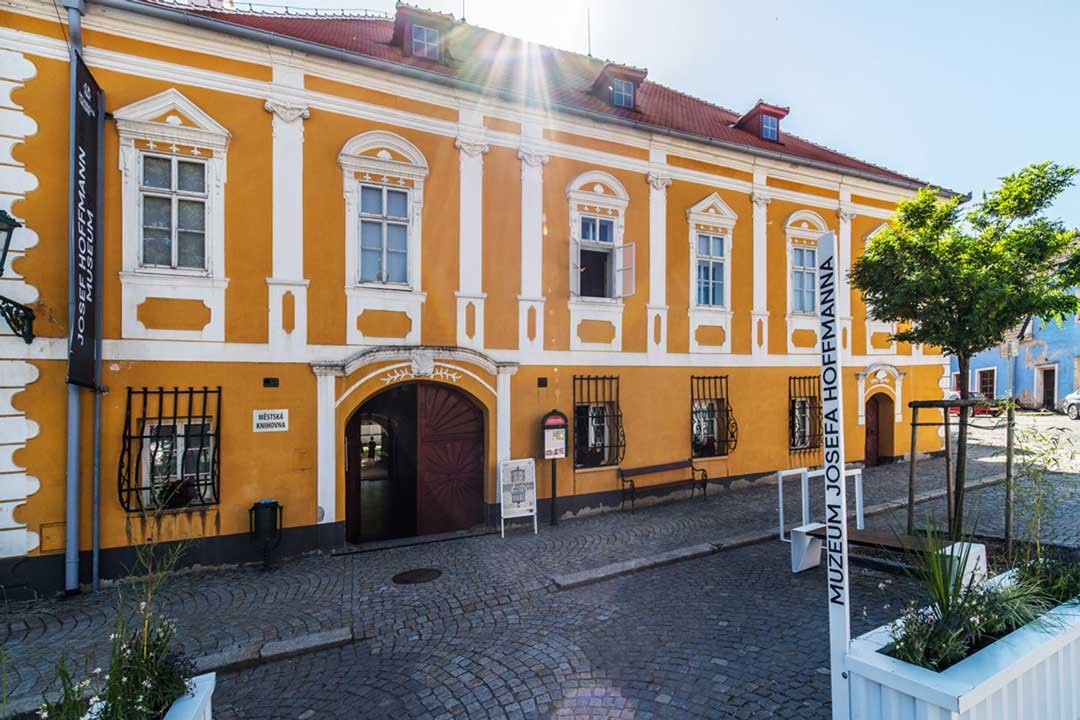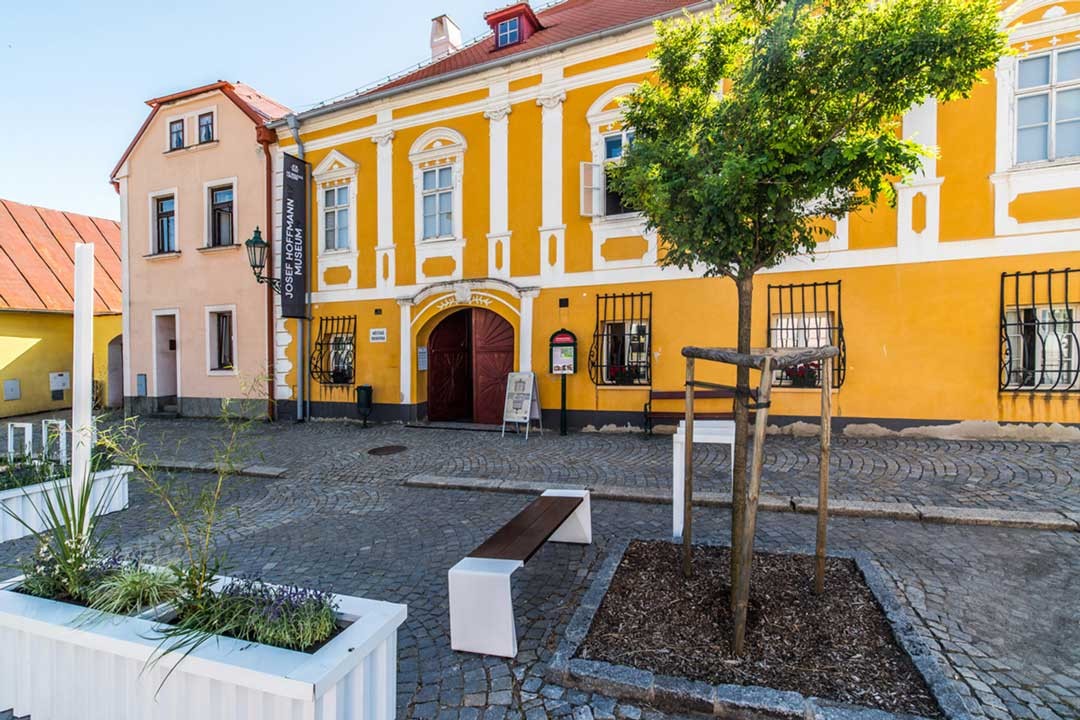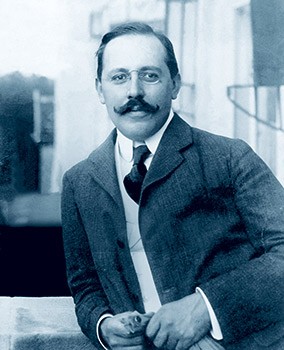Previous Image
The 2019 annual exhibition in the Josef Hoffmann Museum in Brtnice is dedicated to Josef Hoffmann’s (1870–1956) association with Otto Prutscher (1880–1949).
1.7.2019—31.3.2022
Josef Hoffmann Museum Brtnice
Ten years younger than Josef Hoffmann and Adolf Loos, Otto Prutscher belonged to the first generation of Vienna Arts and Crafts School students, which was to benefit from the curricular reforms directed by Felician von Mayrbach and from the teaching of young professors such as Josef Hoffmann and Koloman Moser. Like many other students of the Vienna Arts and Crafts School, Otto Prutscher came from a family of craftspeople: his father Johann Prutscher was a cabinet maker and Otto’s first teacher. Prutscher mastered a range of materials not only in his father’s workshop but also during his time as student at the Arts and Crafts School. For during the long summer vacations, he completed an apprenticeship in bricklaying and practical training in carpentry—paralleling the careers of both Otto Wagner and Josef Hoffmann.
His successful application to the Vienna Arts and Crafts School in 1897 led Prutscher in the “General Studies Department” to Willibald Schulmeister’s class in ornamental drawing and then, for two semesters, to Josef Hoffmann’s specialist class in architecture. The training he received from the secessionist architect Hoffmann and the premodern painter Franz Matsch was to leave its mark on Prutscher’s designs and completed works, in terms both of the graphic quality of his designs and of his orientation towards current trends in architecture.
From 1907 Prutscher began to work for the Wiener Werkstätte, and from 1909 he taught, like Hoffmann, at the Arts and Crafts School. For many years, Josef Hoffmann and Otto Prutscher cooperated on projects such as the Vienna Kunstschau of 1908 and the Cologne Werkbund exhibition of 1914. Like Hoffmann, as designer and architect Prutscher was master of all materials used in the applied arts. He was an exhibition designer, a teacher, and a member of the most important reform movements in art from the Secession to the Wiener Werkstätte and the Werkbund. Prutscher was also motivated by an unbounded creative drive and imagination, giving rise to a thousand sketches and plans. Today we know that Otto Prutscher’s oeuvre includes a very wide range of projects: over 50 buildings (villas, apartment houses, and portals), several architectural projects and designs, nearly 50 exhibitions organized and designed alone or with others, ca. 70 installations commissioned by named and over 100 by unnamed clients, over 300 designs and plans of installations, and over 200 suites and individual pieces of furniture.
Otto Prutscher’s designs were implemented by more than 200 enterprises: the Wiener Werkstätte alone realized hundreds of his designs. He was artistic advisor to Thonet, Loetz Witwe, and Wienerberger; other important manufactories were Backhausen, Klinkosch, Augarten, Meyr’s Neffe, Schappel and Melzer & Neuhardt. Even the Deutsche Werkstätten in Dresden used his designs. The exhibition in the Josef Hoffmann Museum aims to present Otto Prutscher, seventy years after his death, in his association with Josef Hoffmann and to elucidate his important role in the development of Viennese Modernism.
Curators:
Rainald Franz, Curator, MAK Glass and Ceramics Collection
Rostislav Koryčánek, Curator of Architecture and Design, Moravian Gallery, Brno
Exhibition design:
Itai Margula
The exhibition is held under the patronage of the ambassador of the Czech Republic in Austria, Ivana Červenková.
The exhibition is realized with financial support from the European Regional Development Fund, and is part of the project “Bilaterale Designnetzwerke” within the framework of the programme INTERREG V-A Austria – Czech Republic.

His successful application to the Vienna Arts and Crafts School in 1897 led Prutscher in the “General Studies Department” to Willibald Schulmeister’s class in ornamental drawing and then, for two semesters, to Josef Hoffmann’s specialist class in architecture. The training he received from the secessionist architect Hoffmann and the premodern painter Franz Matsch was to leave its mark on Prutscher’s designs and completed works, in terms both of the graphic quality of his designs and of his orientation towards current trends in architecture.
From 1907 Prutscher began to work for the Wiener Werkstätte, and from 1909 he taught, like Hoffmann, at the Arts and Crafts School. For many years, Josef Hoffmann and Otto Prutscher cooperated on projects such as the Vienna Kunstschau of 1908 and the Cologne Werkbund exhibition of 1914. Like Hoffmann, as designer and architect Prutscher was master of all materials used in the applied arts. He was an exhibition designer, a teacher, and a member of the most important reform movements in art from the Secession to the Wiener Werkstätte and the Werkbund. Prutscher was also motivated by an unbounded creative drive and imagination, giving rise to a thousand sketches and plans. Today we know that Otto Prutscher’s oeuvre includes a very wide range of projects: over 50 buildings (villas, apartment houses, and portals), several architectural projects and designs, nearly 50 exhibitions organized and designed alone or with others, ca. 70 installations commissioned by named and over 100 by unnamed clients, over 300 designs and plans of installations, and over 200 suites and individual pieces of furniture.
Otto Prutscher’s designs were implemented by more than 200 enterprises: the Wiener Werkstätte alone realized hundreds of his designs. He was artistic advisor to Thonet, Loetz Witwe, and Wienerberger; other important manufactories were Backhausen, Klinkosch, Augarten, Meyr’s Neffe, Schappel and Melzer & Neuhardt. Even the Deutsche Werkstätten in Dresden used his designs. The exhibition in the Josef Hoffmann Museum aims to present Otto Prutscher, seventy years after his death, in his association with Josef Hoffmann and to elucidate his important role in the development of Viennese Modernism.
Curators:
Rainald Franz, Curator, MAK Glass and Ceramics Collection
Rostislav Koryčánek, Curator of Architecture and Design, Moravian Gallery, Brno
Exhibition design:
Itai Margula
The exhibition is held under the patronage of the ambassador of the Czech Republic in Austria, Ivana Červenková.
The exhibition is realized with financial support from the European Regional Development Fund, and is part of the project “Bilaterale Designnetzwerke” within the framework of the programme INTERREG V-A Austria – Czech Republic.

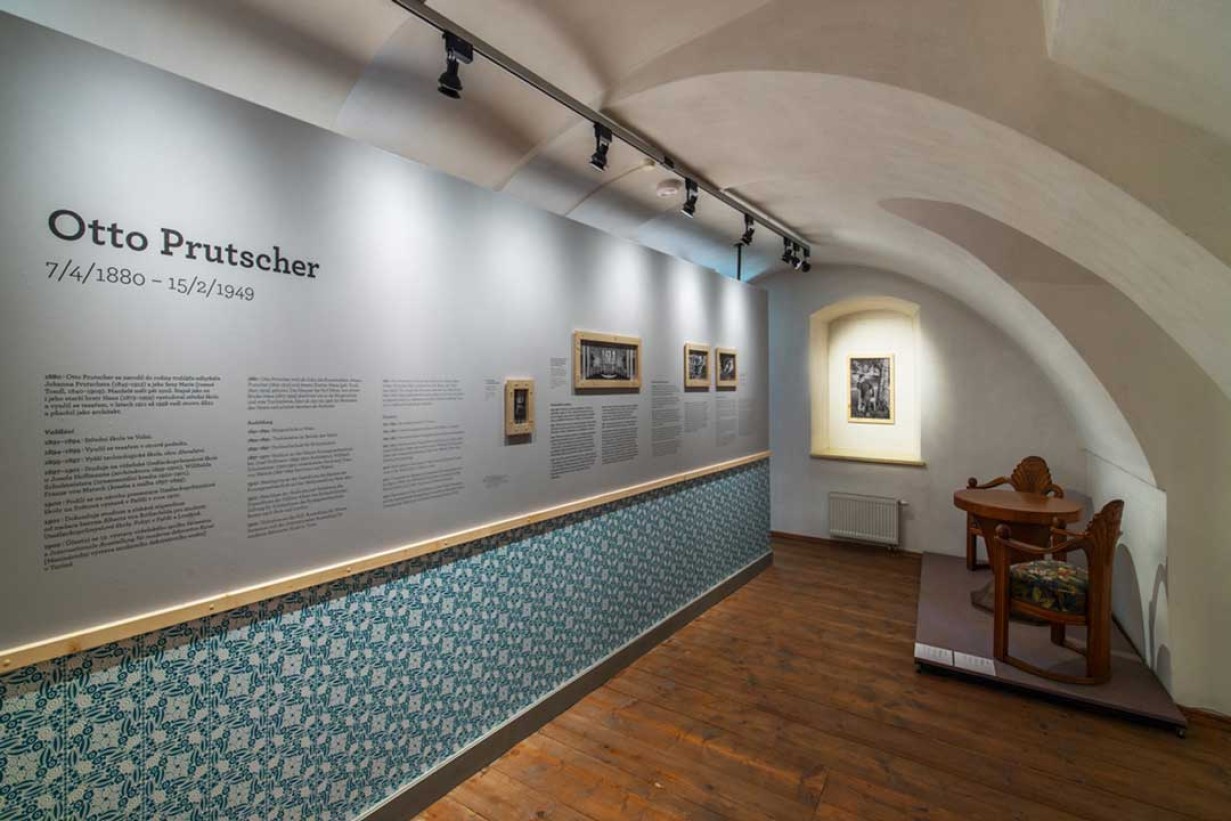
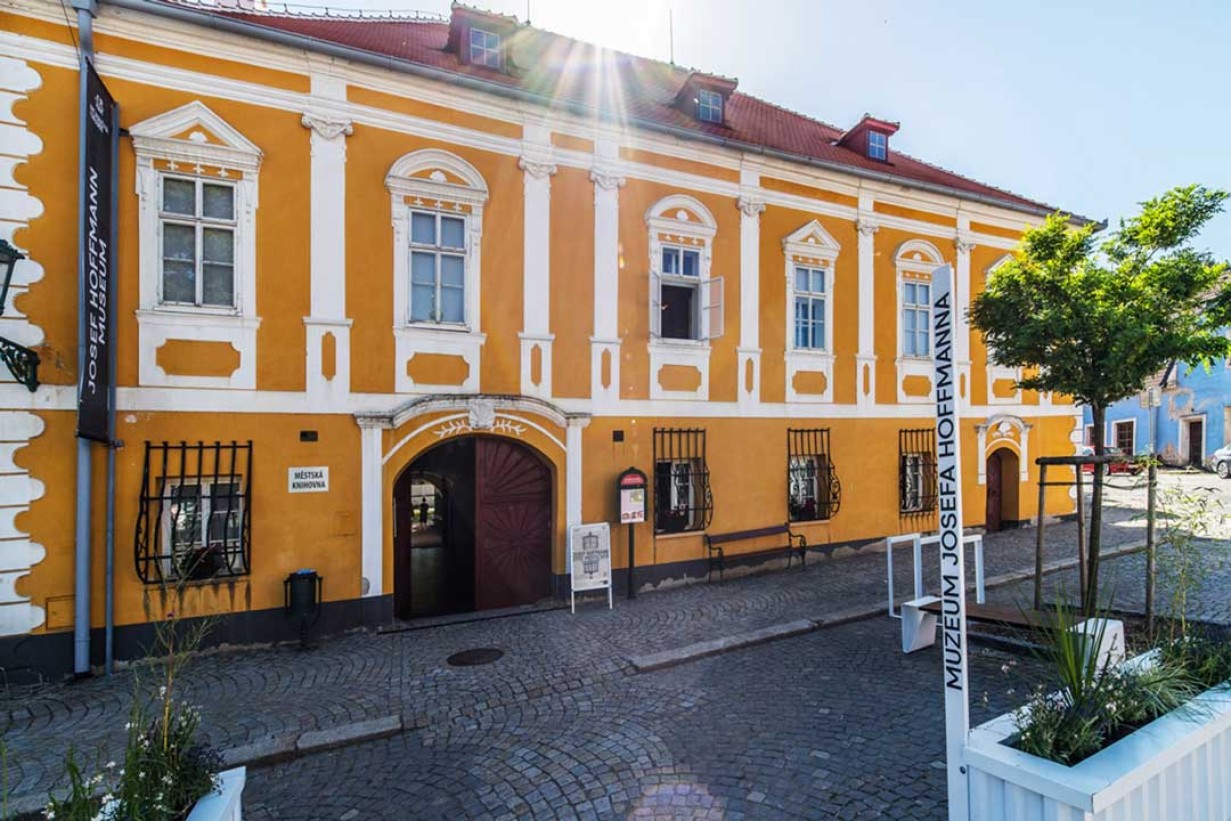
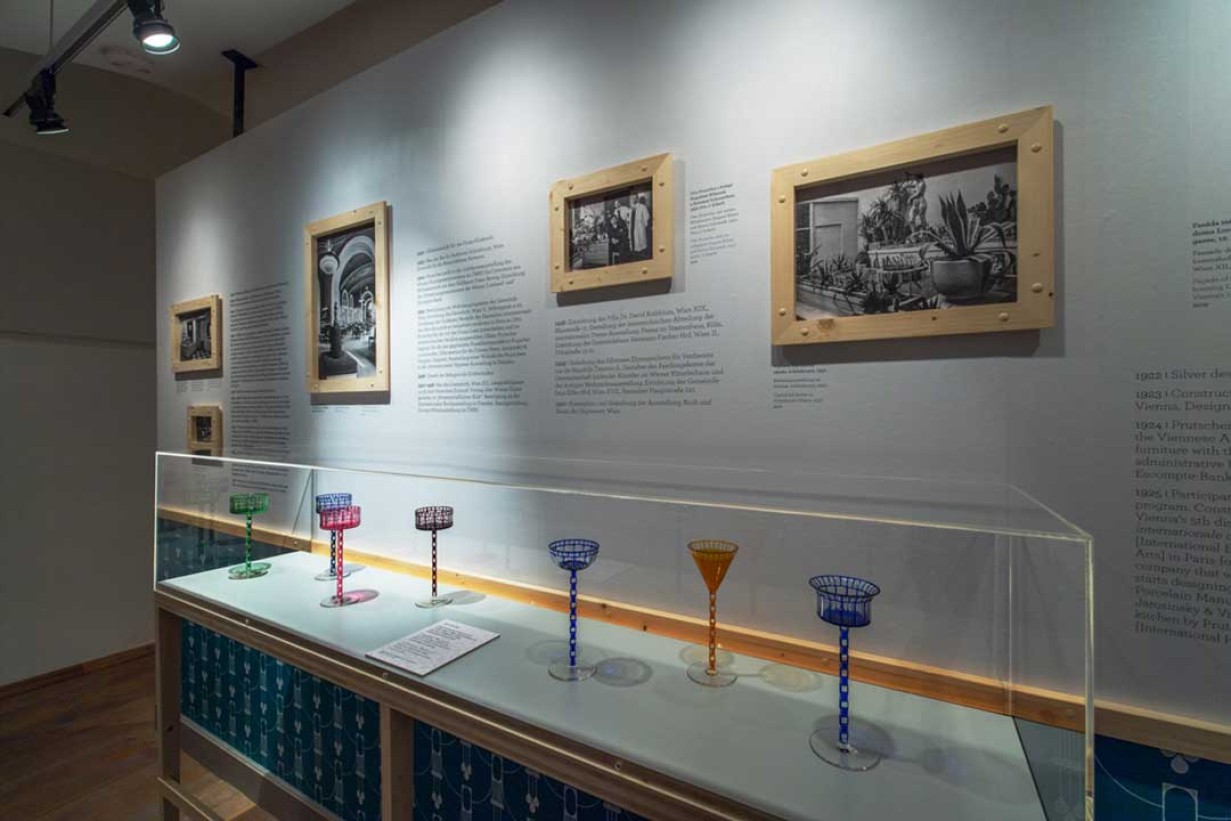
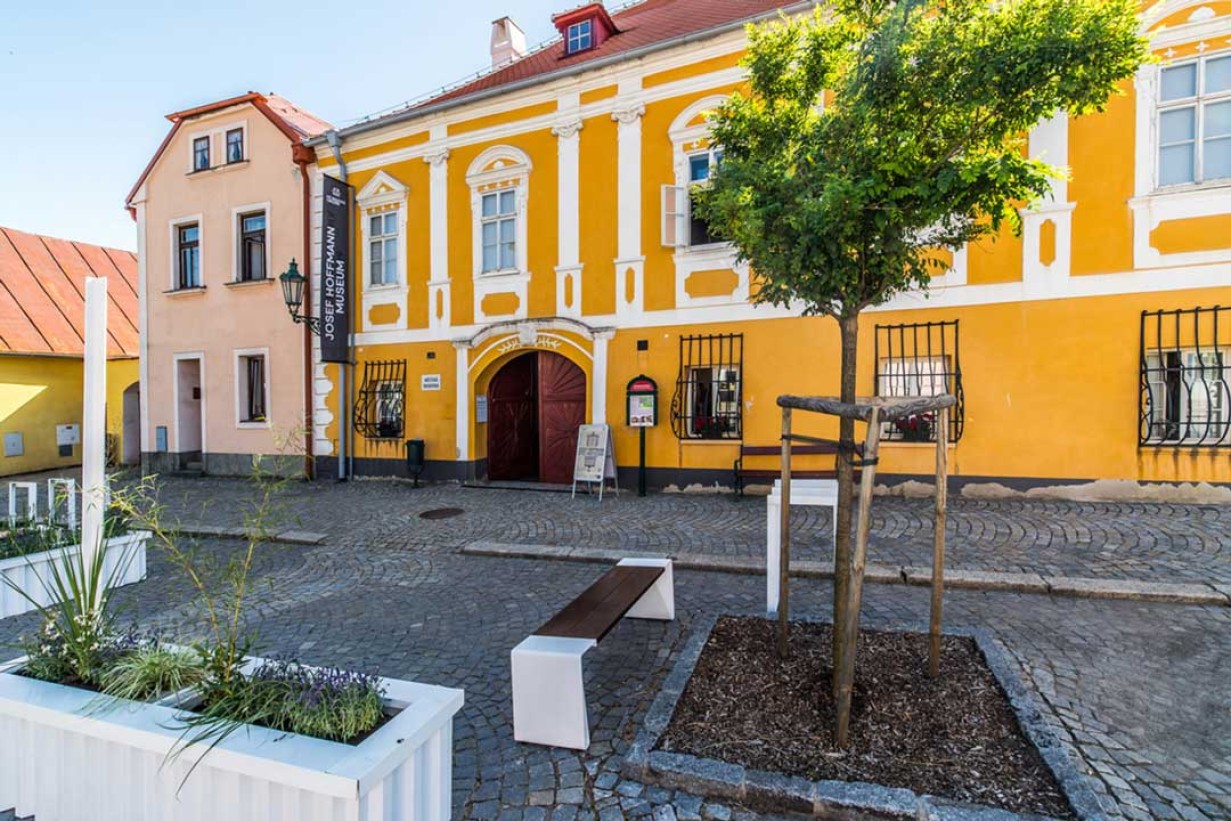
Previous Image
